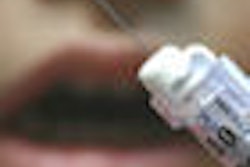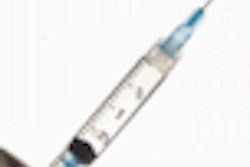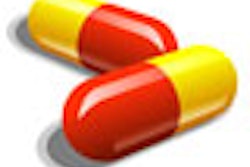A local anesthetic is a boon -- until your patient no longer needs it. Then it's a bother, the patient suffering with numb cheeks, lips, and tongue, hours after a procedure is over.
But relief may be at hand. San Diego-based Novalar Pharmaceuticals' NV-101 could be the first local anesthetic reversal agent to hit the market. Under development since 2002, the drug is being reviewed by the FDA and news of its approval could come as soon as next month. (And when U.S. Food and Drug Administration approval comes, Novalar's clinical studies on the product may appear shortly thereafter in JADA.) NV-101 has been tested with lidocaine, prilocaine, articaine, and mepivacaine, all with a vasoconstrictor.
With NV-101, serendipity and ironies abound. The product got its start around 2000, when a dentist was talking to Dr. Eckard Weber, a patient who happened to be a pharmacologist. The dentist asked Weber why there wasn't a way to reverse the effects of local anesthetics. "Why not indeed?" thought Weber, who ended up cofounding Novalar to answer that question.
The other bit of kismet? The key component of NV-101 -- a modified version of phentolamine mesylate -- has been around for nearly 50 years as an anti-hypertensive drug, and has a good safety track record.
How does NV-101 flush local anesthetics like lidocaine out of your body? Novalar isn't quite sure. "We think it's a vasodilation mechanism," says Bruce Rutherford, D.D.S., Ph.D., and vice president for clinical development at Novalar, in an interview with DrBicuspid.com. When injected, the drug apparently expands the blood vessels, increasing blood flow, which results in "faster diffusion of anesthetic into the cardiovascular system and away from the site."
Why can't you reverse the effects of local anesthetic?
How fast does NV-101 work? "In our soft-tissue tests, doing deep scaling and standard restorations, 50 percent of the NV-101 subjects recovered in an hour -- versus 10 percent in the untreated control group," according to Dr. Rutherford. After 90 minutes, almost all the NV-101 subjects were no longer numb (versus the two to five hours it normally takes soft tissue to "recover" from local anesthesia). According to Rutherford, NV-101 itself is out of your system in a little over two hours.
Using NV-101 is a snap, the company claims. It will come in a standard dental cartridge and you inject it just like lidocaine -- and in the same place.
Will NV-101 work as claimed? "Maybe" says Gary Strichartz, Ph.D., professor of anesthesia (pharmacology) at Harvard Medical School. "But we'd really like to see Novalar's research. Have they done double blind, placebo-controlled studies? Using lidocaine alone and lidocaine with epinephrine?"
The answer, says Novalar's Dr. Rutherford, is mixed. The studies weren't strictly double blind. "We couldn't blind the dentist administering the anesthesia and NV-101," says Dr. Rutherford. But the subject was blind-folded during the administration of NV-101 or a control "sham" injection. (The latter mimicked an NV-101 injection -- instruments used, patient handling, etc., but the needle remained covered and did not penetrate tissue.) "Those observing the subject and assisting with the measures of recovery were blinded as to the study design and study drug administered," says Rutherford.
Contraindications? In the company's clinical trials, one or two cartridges of NV-101 were administered to adult subjects. Except for those allergic to phentolamine, there are few adverse effects according to Dr. Rutherford. "If you qualify for dental treatment and can receive a local anesthetic, you can take NV-101."
Novalar claims it has tested NV-101 on a range of patients, from 3 to 92 years old, from asthmatic kids to hypertensive adults. "Remember -- this drug has been on the market for 50 years," says Rutherford. "And we're using a tenth of the traditional dosage of the drug." A single 1.7-mL cartridge of NV-101 contains 0.4 mg of phentolamine.
So who wants NV-101? Based on its focus groups, Novalar says just about everyone -- dentists (especially pediatric dentists) and their patients. The market for anesthetic reversal could be huge, says Novalar. "Three hundred million capules of local anesthetic are sold in the U.S. every year; 600 million worldwide," says Rutherford. "If we get even 10 percent of that market, we're talking $100 million and up."
At this juncture, the company hasn't announced pricing, much less the ultimate trade name for NV-101. And further details about the drug are still under wraps, pending FDA approval and the drug's ultimate release. To get additional details about NV-101, go to Novalar's site. To get a lot of details, sneak a peak at the company's patent application.



















